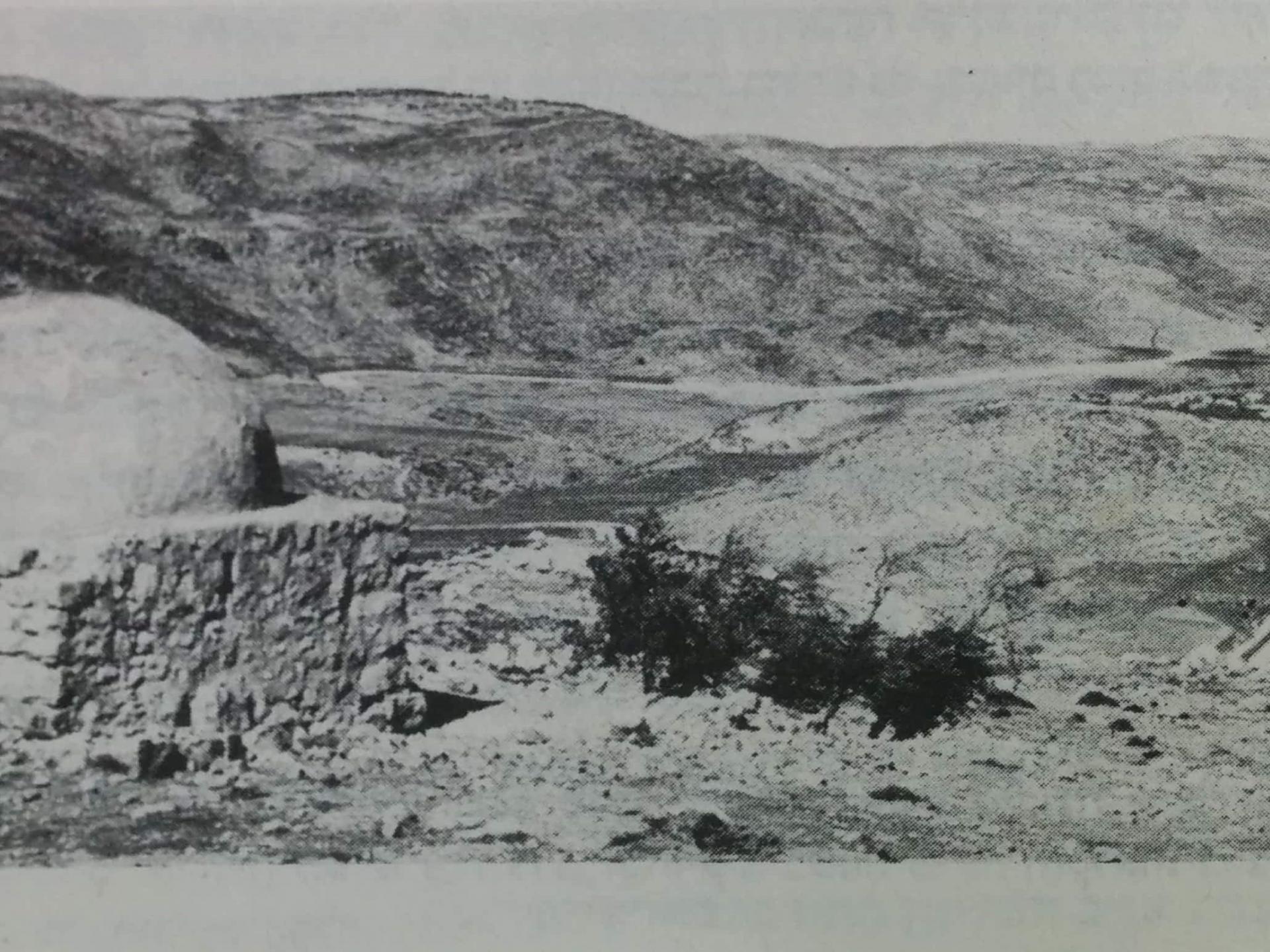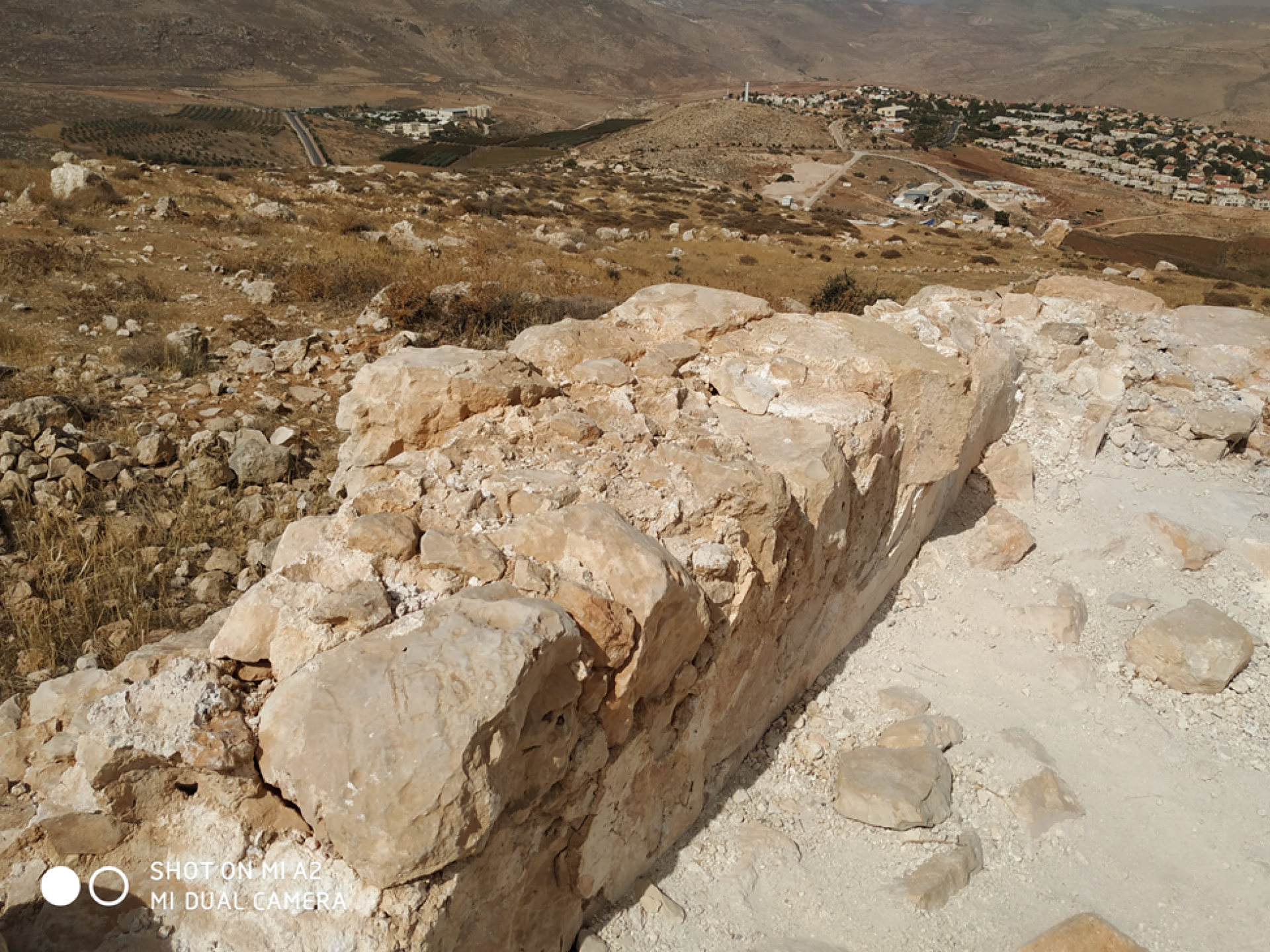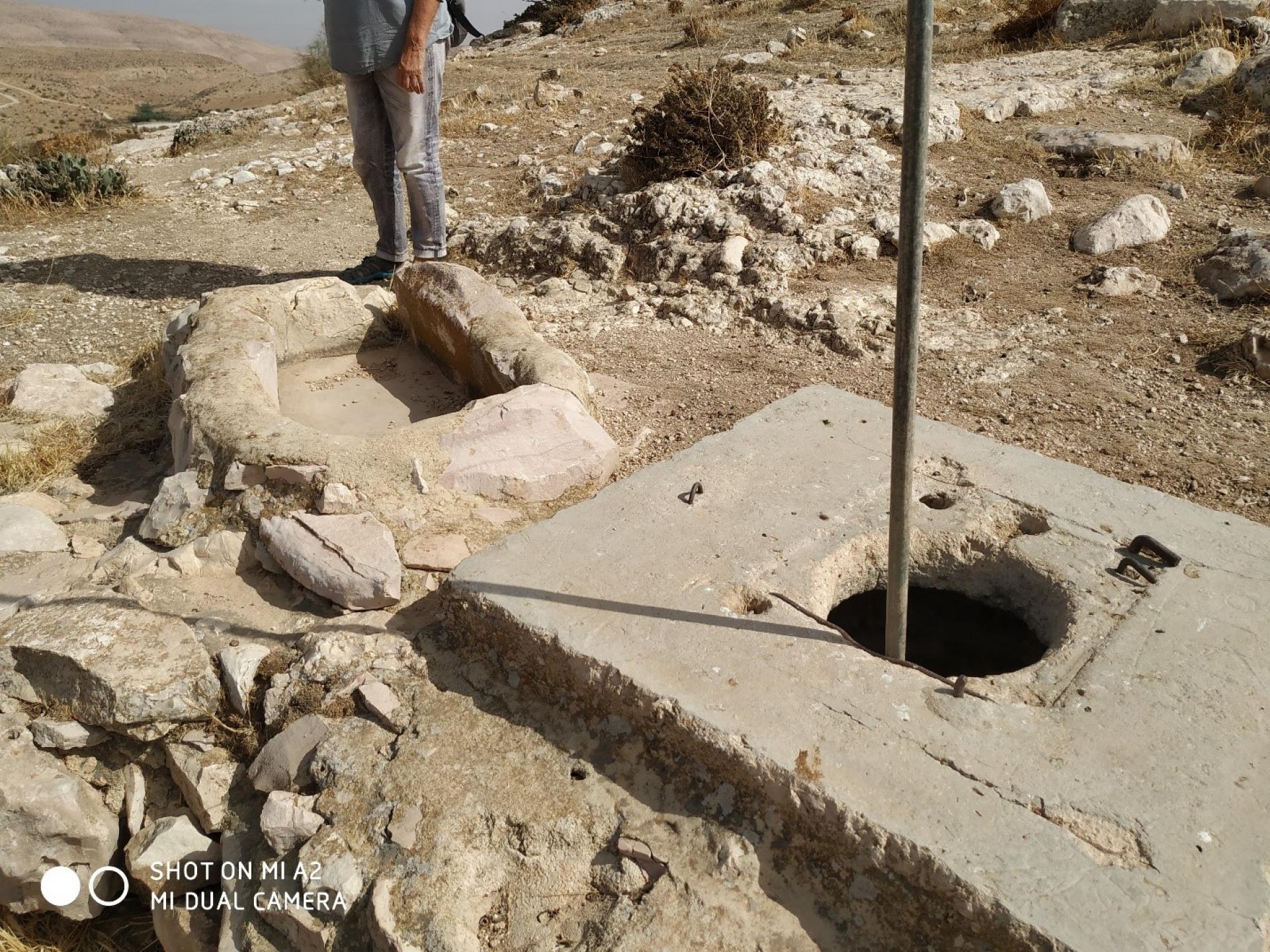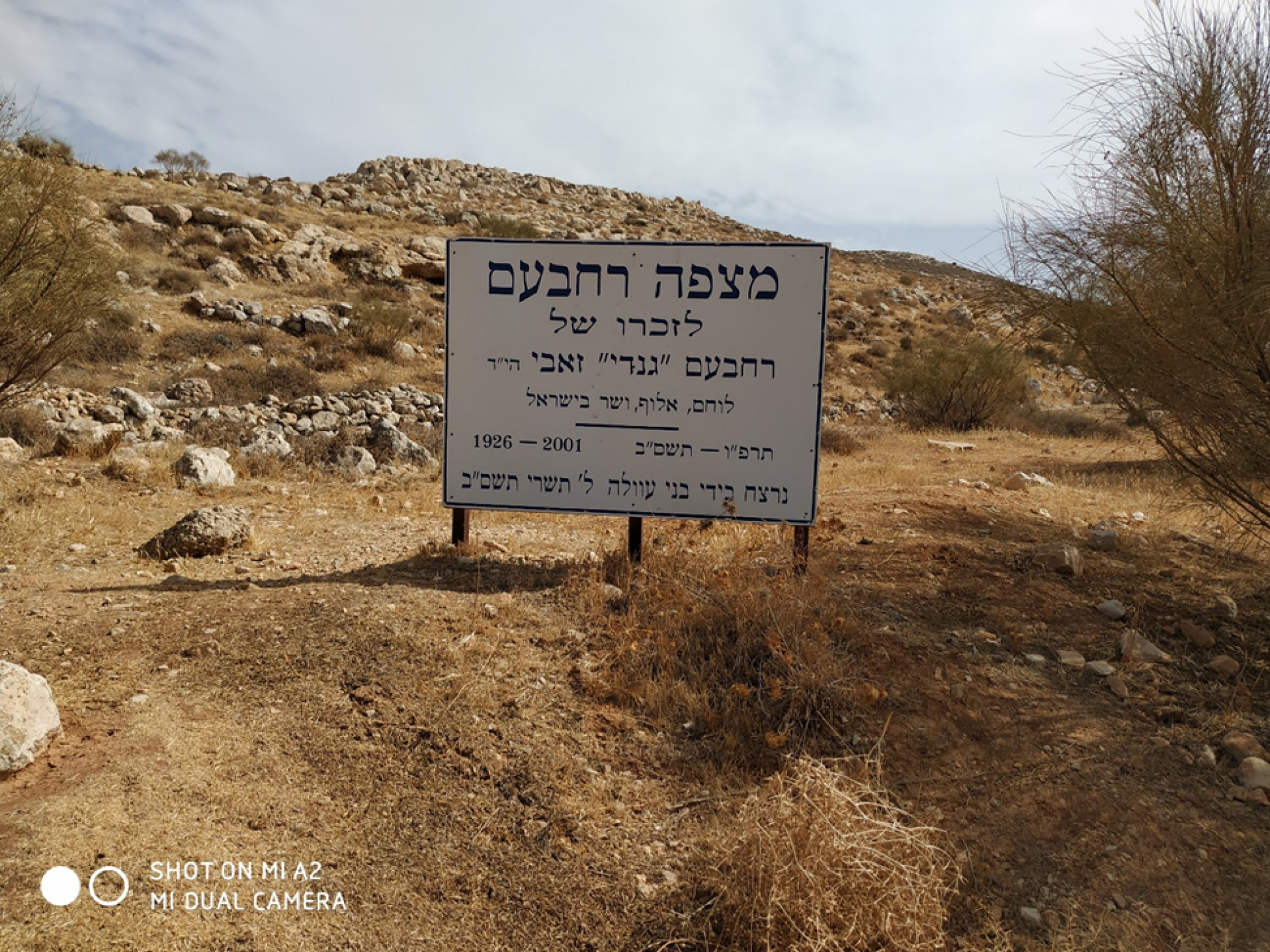Maqam Sit Zahra: The Israeli Occupation erases evidence of Palestinians’ religion and culture


4. A sign designating the Rechav’am Ze’evi Observation Point on the trail leading to maqam Sit Zahra. The observation site is already constructed with a new stage next to it, but for some reason the sign has not yet been placed there.
A moment before the actual remains on the ground are erased, we drove to the nature reserve called Kochav Ha-Shachar situated inside the fence and behind the entry gate of the Jewish settler-colony by the same name, to check out the ruins of Maqam Sit Zahra, and with us was archeologist Gideon Sulimani.
Our double mission this time, like our previous ones, is as follows:
- To ascertain and document the places on the hills of the West Bank that had been foci of pilgrimage – maqams (holy sites for Muslims)/ mosques, in order to demand accessibility, preservation and more, and to record and collect testimonies from village elders.
- To act towards the de-legitimization of the Israeli Occupation and its executive branches – the Staff Officer for Religious Matters who does not recognize maqams as Muslim sites of worship and thus betrays his position and duty to look out for them, in utter contrast to his regard of Jewish sacred sites (Joseph’s Tomb, Rachel’s Tomb etc.). In fact, the Staff Officer for Religious Matters has been implementing apartheid policy, unlike the official declarations posted on his website. He abandons the (Muslim) structures to the ‘care’ of the Israeli Nature and Parks Administration that is not at all supposed to look after religious heritage sites. Alternately or in parallel manner, these sites are caged inside areas that are out of bounds for Palestinians but open to Jewish settler-colonists, and thus too in archeological sites such as “Jacob’s Dream” in settler-colony Beit El.
In short, our purpose on such visits is to try and distrupt the erasure of Palestinian cultural heritage on the ground from which it has been expropriated. Such erasure aspires to deny their existence and ignores the fact that all the maqams are situated on Waqf lands (Waqf – the official Muslim administration body) whose legal status is that of privately-owned land. Since the Palestinians are denied access to these sites because of the Israeli occupation and control of the West Bank, we see it as our duty to study and document their holy sites and warn against their abandonment and destruction.
In our first visit we could not find the remains of this maqam. In our second visit, after crossing information, we found the remains. To this – our third – visit, we brought archeologist Gideon Sulimani with us.
Amikam Shuv’s photograph of Maqam Sit Zahra (see above) was made public in the Israel Guide (Practical Encyclopedia) of 1980, and again in a book on the subject published in 1996 with text by Sefi Ben Yosef, speaking of the active ritual at the site by the Palestinian villagers of Deir Jarir. The Jewish settler-colony Kochav Ha-Shachar was built on land belonging to this village, and its outpost Mitzpe Kramim was built on privately-owned Palestinian land as well, all in “good faith” as the settler-colonists claimed in court (their case is still being handled).
Maqam Sit Zahra whose demolition has been carried out with heavy equipment is situated inside the “nature reserve” Kochav Ha-Shachar which has been declared out of bounds for Palestinians. Naturally the place has not been acknowledged by the Staff Officer for Religious Matters and serves the settler-colonists for recreation and national Israeli ceremonies, as findings on site have shown.


Here are archeologist Gideon Sulimani’s comments:
The entrance is through the settler-colony Kochav Ha-Shachar, and part of the trail that includes an observation point inside the settler-colony is on the hilly extension descending to the west at an altitude of 700 meters. The maqam itself is named after Sit Zahra, a local holy woman associated with the village of Kafr Malik.
The structure of the tomb: dimensions are about 4 by 4 meters, the walls are one meter thick. The entrance is through an opening in the western wall of the tomb. The prayer space is along the eastern wall. The structure was surrounded by a stone wall built about 2 meters away from the structure’s walls. The structure is now collapsed, only the bottom third of its walls still standing. It was whole until the 1980s, including its done. The structure was built about 400-500 years ago and in its style resembled maqam Salman Al Farsi.
